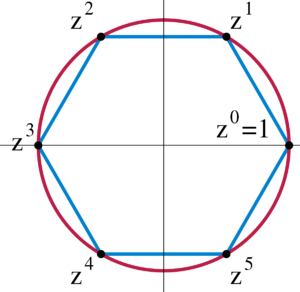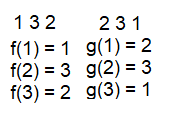A Note on Groups
Groups are an abstractly defined concept used in abstract algebra. An understanding of the basic concepts of groups will enhance one’s understanding of the Galois Group. A general group will first be defined, and then different types of groups will be explained.
Groups make use of an operation, which may be denoted "*". Note that this does not refer to multiplication, but an operation in the abstract.
One may define a group as a set of numbers that fulfill four conditions for an operation *:
1. The use of * between any two numbers within the set must equal another member in the set ( a * b = c)
2. The associative property exists for the operation * for all members of the set
3. There exists a member of the set i called an “identity” such that (a * i = a) or (i * a = 1)
4. Each member of the set has an invertible operation with * such that (a * b = 1) or (b * a = 1)
In addition, there are different types of groups. One such group is the cyclic group: In order to understand a cyclic group, a comparison to modulus would be appropriate. Consider a set containing the numbers 0,1,2,3,4,5. If one were to apply the modulo three to each number, the set would become (0,1,2,0,1,2). Cyclic groups work in a similar way. One may define a cyclic group using an order o by denoting Co. The order tells how many elements exist in one cycle. If one were to define a set,
C6= 1, x1, x2,x3,x4....
then the operation for the group, *, can be used to operate on elements, with some extra properties. Note that the o-th element of the group is equal to 1; the element o - 1 denotes the end of a cycle. For the C6case, there exists an operation x4 * x2 = x6, where x6 would be equal to 1 in this case.
Cyclic groups are often represented geometrically as well. Often times the set is depicted as a regular polygon inscribed within a circle. Here is one example of this:
Besides the cyclic group, a symmetric group is another type of group that exists. Suppose one denotes a symmetric group as Sn. Then, the symmetric group is the set of n elements along with all of its permutations. An example of this would be S3: this include the set (1,2,3) along with all of its permutations such as (3,1,2). The operation that occurs over this group is actually the function composition operation. This operation proves to be a powerful one, as described in this image:
To arrive at another permutation in the group S3, one must take f * g, where * is the function composition operator. Then,
f(g(1)) = 3
f(g(2)) = 2
f(g(3)) = 1
Simply by using a composition operation on two functions, one has arrived at a brand new permutation set (3,2,1). By applying this operation, one may see that the properties of a group hold.
Another mathematical structure explored in the following section is the field.



